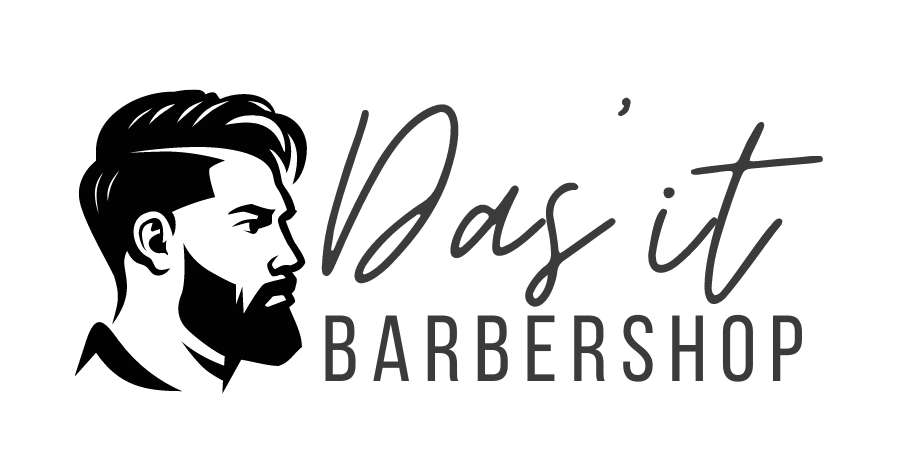Razor burn is the arch-nemesis of a smooth and clean shave. It can cause redness, irritation, and discomfort that lasts for days. Shaving is a daily or weekly ritual for many, but the aftermath can often be a nightmare. Nicks, cuts, and razor burns can turn what should be a routine grooming activity into a painful chore. However, with the right approach and techniques, you can transform your shaving experience into a soothing, pain-free process. In this blog, we’ll share six expert tips to help you achieve a smooth, irritation-free shave, ensuring your skin stays healthy and comfortable. Say goodbye to the discomfort and hello to a refreshing, clean shave!
1. Why Razor Burn Occurs and the Impact on Skin Health
Razor burn occurs when the razor blade irritates the skin, leading to a series of uncomfortable symptoms such as redness, inflammation, and irritation. This irritation often results from improper shaving techniques, such as pressing too hard on the skin, shaving against the grain, or making multiple passes over the same area. Additionally, using dull blades can exacerbate the problem, as they tug at the hair and skin instead of providing a clean cut. Preparing the skin inadequately before shaving—such as failing to soften the facial hair with water and shaving cream—also contributes to the likelihood of razor burn.
The impact of razor burn extends beyond mere discomfort. Micro-abrasions created by the razor can leave the skin vulnerable to bacterial infections, increasing the risk of pimples and folliculitis. The inflammation can prompt enhanced sensitivity and itchiness, creating a cycle that can result in scratching and further skin damage. In some cases, ingrown hairs may form when the hair curls back into the skin, causing painful bumps and additional irritation. Therefore, taking careful steps to avoid razor burn is crucial not only for maintaining the aesthetic appeal of smooth skin but also for its overall health and well-being. Proper skin care methods and the right shaving techniques can significantly reduce the risk of razor burn, leaving the skin feeling refreshed and comfortable.
2. Choose the Right Razor
Not all razors are created equal. Selecting the right razor can make a significant difference in your shaving experience, especially if you have sensitive skin or specific shaving needs. Here are some detailed tips to help you choose the best razor for your skin type:
Multi-Blade Razors: Multi-blade razors are designed to provide a very close shave by using multiple blades to cut the hair progressively shorter with each stroke. This can be ideal for those looking for the smoothest possible shave. However, if you have sensitive skin, multi-blade razors might not be the best choice. The multiple blades can cause more friction and increase the chances of irritation and razor burn. It’s also essential to ensure that the blades are sharp and well-maintained to avoid dragging and tugging.
Single-Blade Razors: Single-blade razors, often found in safety razors or straight razors, are an excellent option for sensitive skin. With a single blade, there is less chance of causing multiple micro-abrasions on the skin, reducing the risk of razor burn and ingrown hairs. Single-blade razors allow for more precision and control, which can be beneficial for those with areas prone to irritation. Additionally, they often require a bit more skill and practice but can provide a smoother and gentler shave.
Electric Razors: Electric razors are a good alternative for those who need a quick and convenient shave with minimal risk of cuts and irritation. These razors can be gentler on the skin as they typically do not cut as close as manual razors, making them suitable for people with sensitive skin or conditions like acne. There are two main types of electric razors: foil and rotary. Foil razors use oscillating blades covered by a thin foil, while rotary razors have rotating blades underneath circular heads. Selecting between the two comes down to personal preference and skin type; foil razors tend to be better for sensitive skin, while rotary razors can handle longer hair and contoured areas more effectively.
When choosing a razor, also consider other factors such as ergonomics, the handle design, and whether the razor allows for easy blade replacement or cleaning. You can get recommendations from New York Barbershop From Razor Burn, if you are confused. Personal preferences and specific needs will ultimately guide you to the best choice for a comfortable and effective shave.
3. Pre-Shave Preparations
Here is Advice on How to Prepare Your Skin and Hair for a Smoother Shave
Preparation is key to a smooth shave:
1. Cleanse: Start by washing your face with warm water and a gentle cleanser. This step is vital as it removes dirt, oils, and impurities, opening up your pores. Clean skin provides a clean surface for the blade to glide over, reducing the chances of irritation and cuts. The warm water additionally helps to soften the hair, making it more pliable for shaving.
2. Exfoliate: Follow up with a mild exfoliator to slough off dead skin cells. This prevents clogged pores and ingrown hairs, which can cause discomfort and spoil the smoothness of your shave. Exfoliation also lifts the hair follicles, allowing the razor to cut more efficiently and closer to the skin. To prevent irritation, use an exfoliant that is appropriate for your skin type. For optimal results, gently massage the product in circular motions.
3. Hydrate: Hydration is crucial for softening the hair and making it easier to cut. You can achieve this by applying a warm, wet towel to your face for a few minutes. Alternatively, shaving immediately after a hot shower achieves the same effect. The heat and moisture from the towel or shower will open your pores and soften the hair, reducing the resistance against the blade and leading to a smoother, more comfortable shave. This step is particularly important for individuals with coarse or thick hair.
4. The Perfect Shaving Technique
Follow these steps for the perfect shave:
1. Use a Sharp Blade: Ensure that you replace your razor blade regularly. A dull blade can tug at the hair and lead to skin irritation and nicks. Using a sharp blade ensures that each pass cuts the hair cleanly and reduces the number of times you need to go over the same area. This simple step can significantly enhance your shaving experience and the overall smoothness of your skin.
2. Apply Shaving Cream: Choose a quality shaving cream or gel designed to reduce friction and protect your skin. Applying shaving cream helps to create a smooth surface for the razor to glide-over, reducing the risk of cuts and irritation. Spread an even layer of shaving cream over the area you intend to shave, allowing it to sit for a minute or two to further soften the hair and skin.
3. Shave with the Grain: Always shave in the direction of hair growth. Shaving against the grain might provide a closer shave, but it increases the likelihood of irritation, razor burn, and ingrown hairs. By shaving with the grain, you minimize the risk of these issues, leading to a more comfortable and irritation-free shaving experience.
4. Rinse Frequently: Rinse your razor under warm water after every few strokes. This prevents the buildup of hair and shaving cream on the blade, which can dull its sharpness and diminish its effectiveness. Keeping the blade clean ensures a smoother shave & reduces the risk of irritation caused by a clogged razor.
5. Be Gentle: Use light, short strokes without pressing too hard. Applying too much pressure can cause cuts and increase skin irritation. Let the blade do the work, gliding gently over your skin. Taking your time with short, careful strokes will provide a cleaner shave and leave your skin feeling smoother and less irritated.
5. Post-Shave Care
After shaving, your skin needs some TLC to maintain its health and smoothness. Here are some essential tips:
Rinse with Cold Water
Closing your pores and reducing inflammation is crucial right after shaving. To do this, rinse your face with cold water. The cold temperature helps to seal the pores, reducing the risk of bacteria entering and causing irritation or breakouts. Additionally, cold water can soothe any minor cuts or nicks, making your skin feel refreshed and less irritated.
Apply After-Shave Balm
Choosing the right after-shave product is vital for skin health. Opt for an alcohol-free after-shave balm, as alcohol can dry out and irritate your skin. A good after-shave balm will contain soothing ingredients like aloe vera, chamomile, or tea-tree oil, which help to calm irritation and reduce redness. Apply a generous amount of balm to your face, gently massaging it in to ensure even coverage and absorption.
Hydrate
Keeping your skin hydrated is essential to prevent dryness and irritation after shaving. Use a quality moisturizer that suits your skin type to replenish moisture and maintain the skin’s natural barrier. Look for moisturizing lotions or creams with ingredients like hyaluronic acid, glycerin, and vitamins E and C, which provide deep hydration and promote skin healing. Apply the moisturizer immediately after the after-shave balm to lock in moisture and keep your skin feeling soft and smooth throughout the day.
6. Alternative Hair Removal Methods
If shaving isn’t for you, consider these alternatives if you want to Manage a Barbershop according to their requirement:
Waxing
Waxing provides longer-lasting results compared to shaving, as it removes hair from the root. This method can keep your skin smooth for up to several weeks. However, be prepared for a certain level of discomfort, as waxing can be painful, especially for those with sensitive skin. But you can get help from any New York Barber .Additionally, it can cause redness and irritation immediately after the procedure, so proper aftercare is vital to soothe the skin and prevent ingrown hairs.
Depilatory Creams
Depilatory creams use chemicals to dissolve hair just below the skin’s surface. These creams offer a painless solution and can be quick and convenient. However, they may cause allergic reactions or skin irritation in some individuals, particularly if you have sensitive skin or leave the product on for too long. Always perform a patch test before applying depilatory cream to larger areas to ensure you do not have an adverse reaction.
Laser Hair Removal
A common choice for people seeking results that are more permanent is laser hair removal. by this technique, hair follicles are targeted and destroyed by concentrated laser beams, stopping further development. Although laser hair removal works well, it takes several sessions to get the best results, and the expense can mount up rapidly. It’s also crucial to keep in mind that not all skin tones and hair colors can benefit from this technique, therefore speaking with a specialist is advisable.
Epilators
Epilators are electronic devices that remove hair by plucking it from the root, similar to waxing but without the use of wax. They offer long-lasting results, often comparable to waxing, but can be quite uncomfortable or even painful, especially during initial use. Over time, as hair grows back finer and thinner, the discomfort may lessen. Epilators are suitable for those who prefer a more efficient and reusable method of hair removal, but they require regular maintenance & proper technique to minimize skin irritation.
Conclusion
By choosing the right razor, preparing your skin, using proper shaving techniques, and taking care afterward, you can say goodbye to razor burn for good. Remember, everyone’s skin is different, so it might take some experimentation to find what works best for you.


